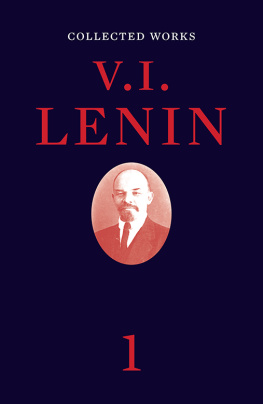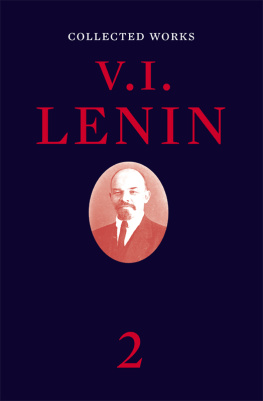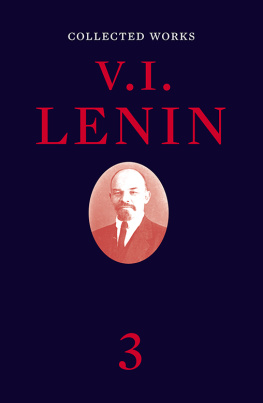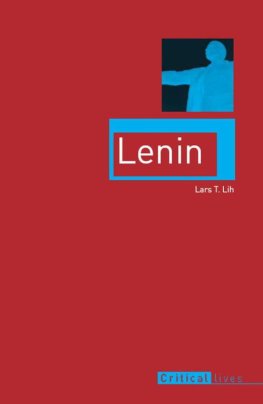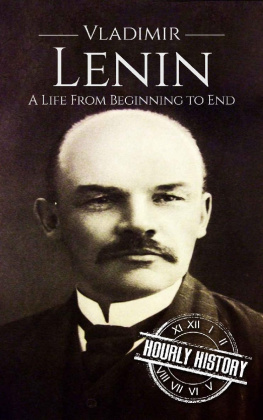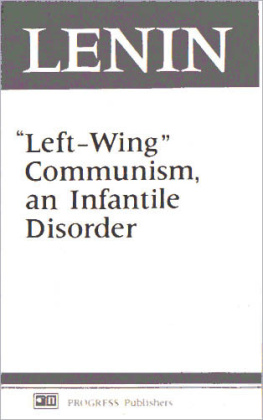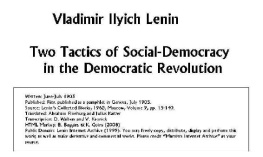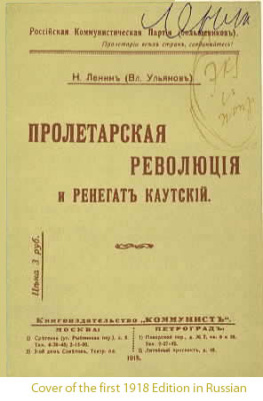V. I. LENIN
COLLECTED WORKS
VOLUME
1893 1894
The typeset files we have used in these editions were created by David J. Romagnolo and are taken from www.marx2mao.com. They represent years of work, meticulously re-creating a stunningly high resolution, re-type-set digital archive of Lenins Collected Works and the PDFs are free to download. Every effort has been made to contact Mr Romagnolo to obtain his permission, but without success, but we are keen to reimburse him.
This English edition of V. I. Lenins Collected Works is a translation of the fourth, enlarged Russian edition prepared by the Institute of Marxism-Leninism, Central Committee of the C.P.S.U.
Corrections have been made to some of the texts and notes in accordance with the fifth Russian edition, and some further editorial comments have been added.
This paperback edition first published by Verso 2017
First published in English by Progress Publishers 1960
Verso 2017
All rights reserved
The moral rights of the author have been asserted
1 3 5 7 9 10 8 6 4 2
Verso
UK: 6 Meard Street, London W1F 0EG
US: 20 Jay Street, Suite 1010, Brooklyn, NY 11201
versobooks.com
Verso is the imprint of New Left Books
ISBN-13: 978-1-78663-485-6
ISBN-13: 978-1-78663-486-3 (UK EBK)
ISBN-13: 978-1-78663-487-0 (US EBK)
British Library Cataloguing in Publication Data
A catalogue record for this book is available from the British Library
Library of Congress Cataloging-in-Publication Data
A catalog record for this book is available from the Library of Congress
Printed in the United States
CONTENTS
1893
1894
ILLUSTRATIONS
V. I. Lenin, 1918
V. I. Lenin, 1890-1891
First manuscript page of Lenins New Economic Developments in Peasant Life, 1893
Cover of Part III, hectographed edition, of Lenins What the Friends of the People Are and How They Fight the Social-Democrats, 1894
Last page of Part III, hectographed edition, of Lenins What the Friends of the People Are and How They Fight the Social-Democrats, 1894
The first volume contains four works (New Economic Developments in Peasant Life, On the So-Called Market Question, What the Friends of the People Are and How They Fight the Social-Democrats, The Economic Content of Narodism and the Criticism of It in Mr. Struves Book) written by V. I. Lenin in 1893-1894, at the outset of his revolutionary activity, during the first years of the struggle to establish a workers revolutionary party in Russia.
In these works, which are directed against the Narodniks and legal Marxists, Lenin gives a Marxist analysis of Russias social and economic system at the close of the nineteenth century, and formulates a number of programme principles and tasks for the revolutionary struggle of the Russian proletariat.
The paper, On the So-Called Market Question, is included in the fourth edition of V. I. Lenins Collected Works: it did not appear in earlier editions. Lenin wrote the paper in the autumn of 1893. The manuscript was believed to be lost beyond recall and was discovered only in 1937, when it was published for the first time.
Lenins work What theFriends of the PeopleAre is published in the present edition according to a new copy of the hectographed edition of 1894 which came into the possession of the Institute of Marxism-Leninism only in 1936, and was not taken account of in previous editions of the Works of V. I. Lenin. The copy mentioned contains numerous editorial corrections apparently introduced by Lenin when preparing to have the book published abroad. All these corrections have been introduced into the present edition. This edition, therefore, contains the exact text of What theFriends of the PeopleAre and How They Fight the Social-Democrats.
NEW ECONOMIC DEVELOPMENTS
IN PEASANT LIFE
Written in the spring of 1893
First published in 1923 | Published according to the
manuscript |
V. Y. Postnikovs Peasant Farming in South Russia (Moscow, 1891, pp. XXXII+391), which appeared two years ago, is an extremely detailed and thorough description of peasant farming in the Taurida, Kherson and Yekaterinoslav gubernias, and partly for the special purpose of studying peasant farming in 1887-1890.
An attempt to combine into one whole the Zemstvo statistical investigations for an entire region and to set forth the results in systematic form is in itself of tremendous interest, since the Zemstvo statistics provide a mass of detailed material on the economic conditions of the peasantry, but they do so in a form that renders these investigations practically useless to the public: the Zemstvo statistical abstracts comprise whole volumes of tables (a separate volume is usually devoted to each uyezd), the mere summarising of which under sufficiently definite and comprehensive headings is a labour in itself. The need to summarise and analyse Zemstvo statistical data has long been felt. It is for this purpose that the publication of the Results of Zemstvo Statistical Investigations was recently undertaken. The plan of this publication is as follows: a particular question related to peasant farming is taken, and a special investigation is carried out, bringing together all the data on this question contained in the Zemstvo statistics; data are brought together relating to the black-earth South of Russia and to the non-black-earth North, to the exclusively agricultural gubernias and to the gubernias where there are handicraft industries. The two published volumes of Results have been compiled according to this plan; the first is devoted to the peasant community (V. V.), the second to peasant rentings of non-allotment land (N. Karyshev). It is quite reasonable to doubt the correctness of this method of summarising: firstly, data relating to different economic regions with different economic conditions have to be placed under one heading (the separate characterisation of each region involves tremendous difficulties due to the incompleteness of the Zemstvo investigations and the omission of many uyezds. These difficulties were already evident in the second volume of Results; Karyshevs attempt to assign the data contained in the Zemstvo statistics to definite regions was unsuccessful); secondly, it is quite impossible to give a separate description of one aspect of peasant farming without touching on others; the particular question has to be artificially abstracted, and the completeness of the picture is lost. Peasant rentings of non-allotment land are divorced from the renting of allotment land, from general data on the economic classification of the peasants and the size of the crop area; they are regarded only as part of peasant farming, whereas actually they are often a special method of private-landowner farming. That is why a summary of Zemstvo statistical data for a given region where the economic conditions are uniform would, I think, be preferable.
While expressing, in passing, my views on a more correct way of summarising Zemstvo statistical investigations, views to which I am led by comparing the

